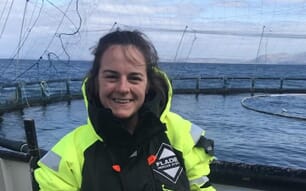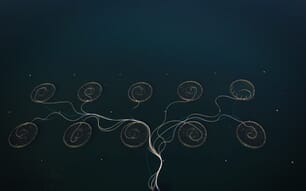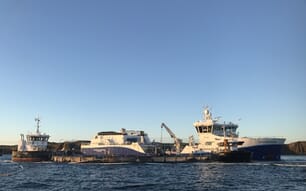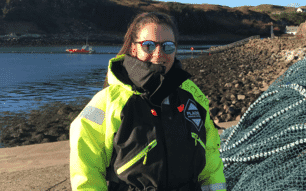One thing I get asked a lot by friends and family is, “What do you actually do at work?” So, in the hope of painting a clearer picture for those not involved in the industry, this month I thought I’d give a rundown of some of the things we technicians do on an average day on Muck’s salmon farm.
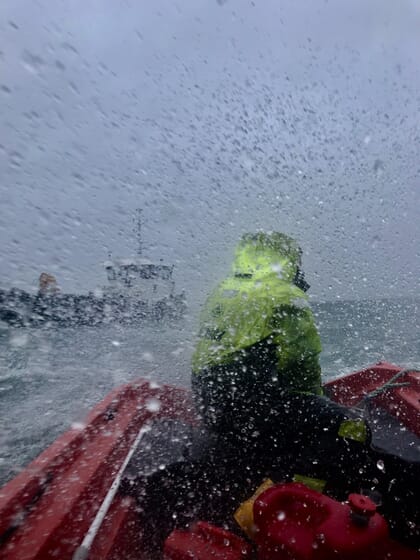
That said, like anything to do with farming and animals, no two days are the same. Plans have a habit of changing hour to hour.
Thrown into the mix is the west coast weather, which is changeable and, at times, challenging. We’ve seen it all in recent weeks: from beautiful sunrises and flat calm mornings to snow showers, freezing temperatures, gale force winds and torrential rain. But I guess that’s just part and parcel of working outside during the Scottish winter.
Furthermore, we’re often reliant on other boats and people to help with certain jobs, placing Muck among a far wider network of logistical planning that ensures the right people are in the right place at the right time. This could include a wellboat for freshwater treatments, a feed delivery or the company electrician coming out to site.
Adding even more complexity to the daily operation of a farm like Muck is its remote location – we’re a two-hour boat journey from Mallaig where the majority of our supplies come from. There is no fuel station on the island and ferries – particularly in the winter – are infrequent. This means trips to the mainland have to be carefully scheduled between everything else, to ensure that we always have what we need in terms of fuel and equipment or to collect people.
Arguably the most important job on the farm is feeding, and it’s probably one of the only things that happens daily, without fail. Even when we can’t reach the site due to the weather, feeding is done remotely from the shore base and it’s a job that takes up the whole day for one member of staff.
Our feed is delivered by specialist boats and is put into silos on the barge. From here, a computer system – along with a series of pipes, blowers and spinners – ensures the feed pellets reach the fish as and when required.
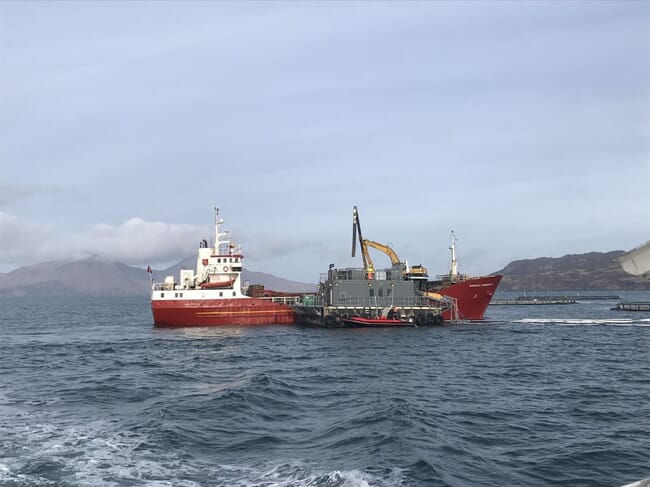
Before feeding starts each day, environmental checks are done. We monitor the salinity, dissolved oxygen and plankton content of the water as well as the level of visibility, allowing us to flag up any abnormalities that might affect feeding or the fish.
There are two cameras on every pen – one below the water and one on the surface – to allow continual monitoring of the fish during feeding times. The underwater camera is particularly important as it allows us to watch the behaviour of the fish, see what depth they are feeding at and if we need to increase or decrease the amount of feed sent to a specific pen. This ensures the fish are fed the optimum amount and that no feed is wasted – which is not only financially important for the farm but also key to reducing any environmental impact to the seabed.
As the saying goes, an unfortunate reality of any farming system is that “where there’s livestock, there’s deadstock”. We therefore check our pens daily for dead fish.
A basket sits at the base of the nets to collect mortalities and is brought to the surface by capstans on the Beinn Airein, allowing us to remove, count and record any dead fish. Not only is this important for maintaining a clean environment within the pens but it is also one way for us to monitor overall stock condition and can be a helpful early indicator of health challenges.

Specific health checks, including lice counts and gill assessments, are carried out weekly. The information gathered is used to inform the need for treatments on the farm. Lice counts are also a legal requirement for all salmon farms in Scotland and our data is submitted to Mowi and the Scottish Salmon Producers Organisation who both publicly publish lice data on a farm-by-farm basis.
Twenty fish are placed in a bath with a light anaesthetic to allow us to handle them carefully. When looking for lice, we have to distinguish between two species – Lepeophtheirus salmonis and Caligus elongatus. Furthermore, the sex and life stage of L. salmonis needs to be specified and recorded.
The gills of every fish are checked and given a score for both amoebic gill disease (AGD) and prolific gill disease (PGD). Swabs are also taken from five fish per pen and these are then sent to our lab in Fort William for further assessment.
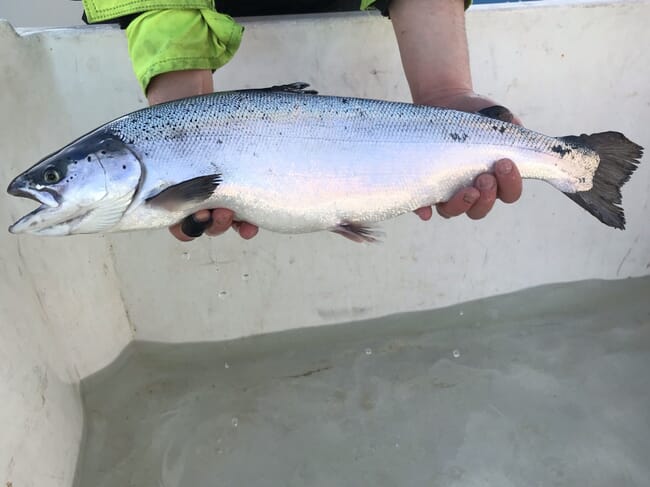
The nets on the pens are washed regularly using a remote-operated net cleaner (RONC). The cleaner is able to grip and move around the net, while jets of water remove any marine growth that naturally builds up over time. A camera on the RONC allows us to see the net and, using a set of controls in the wheelhouse of the Beinn Airein, the speed and direction of the net cleaner can be altered.
At this time of year, the level of growth is relatively low, due to colder seawater temperatures, but it is still important to maintain clean nets to aid water and oxygen exchange, which contribute to the overall welfare of the fish, particularly when it comes to gill health.
Dive teams are also brought onto site roughly every fortnight to check the condition of the nets and to carry out underwater tasks, if required. For us, this normally means a return trip to either Tobermory or Armadale which can make it a long day… but sometimes it ends with the luxury of a Tobermory takeaway, which always goes down well!
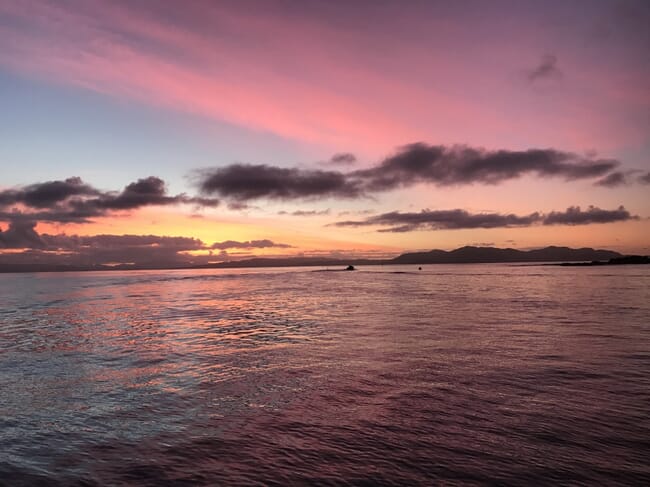
In amongst the regular jobs on site, we are continually carrying out general maintenance on the pens, barge and boats. Whether it’s a camera that needs repositioned, a winch that is stuck or servicing an engine, there is always something to be done.
In reality, there is no such thing as an “average day” in this job, but I hope I’ve managed to provide a taste of what we do and how our salmon are cared for. Coming from an office background dominated by a personal diary monotonously filled with project deadlines, client meetings, business trips and phone calls, the unpredictable and varied nature of being a farm technician was something I originally found difficult to get to grips with. But now, the level of variety in what we do is one of the things I like the most.

